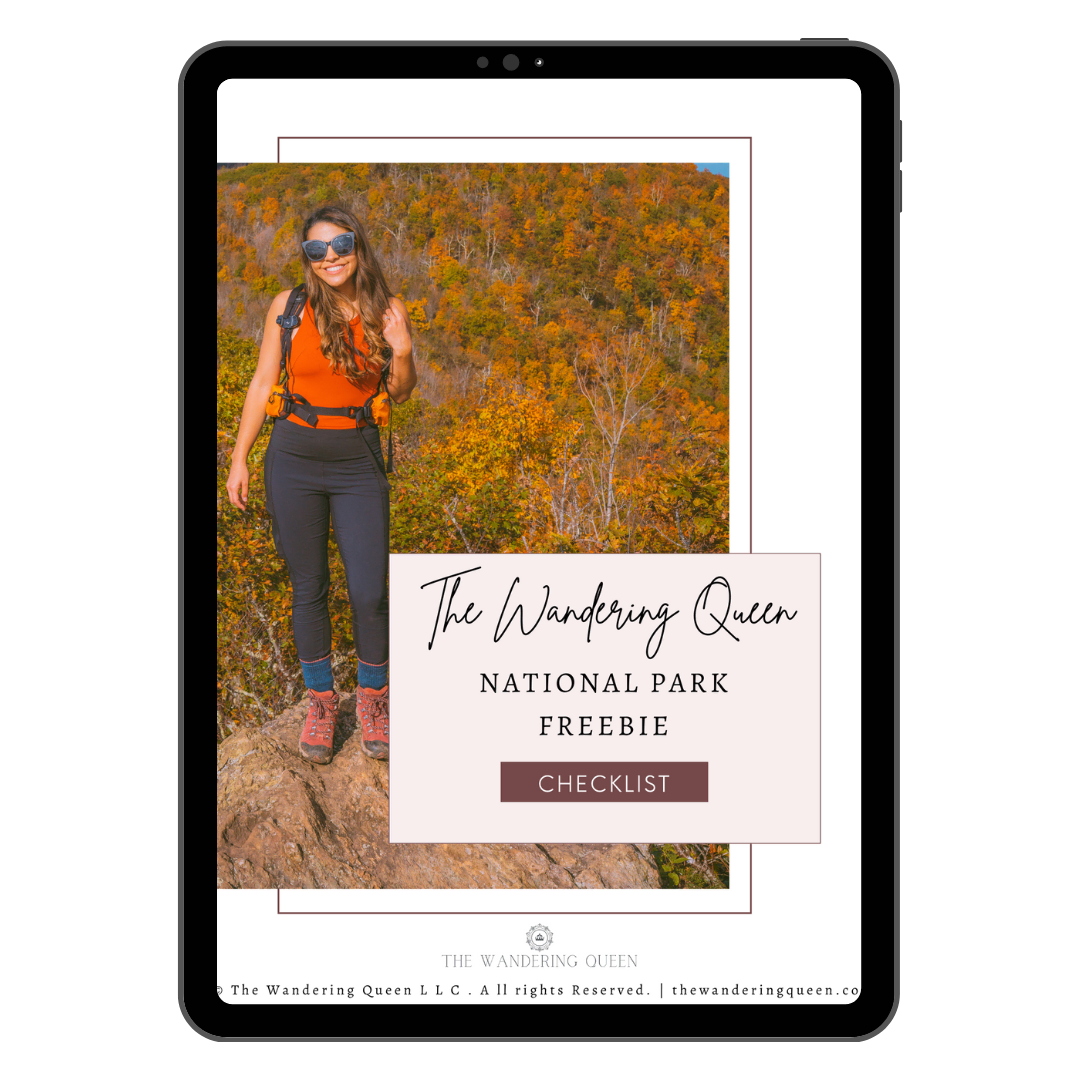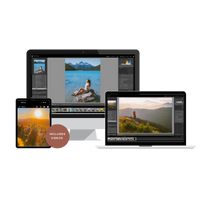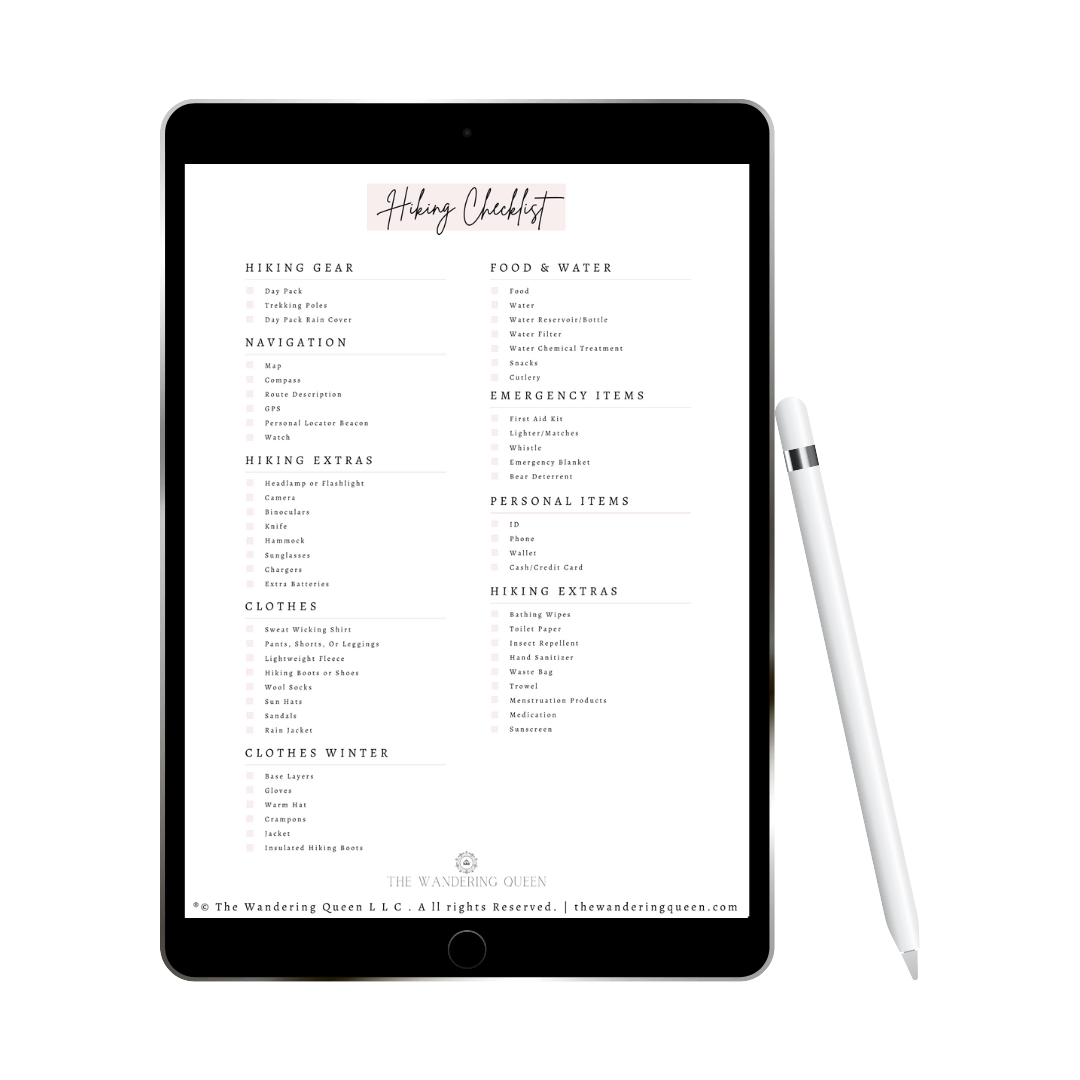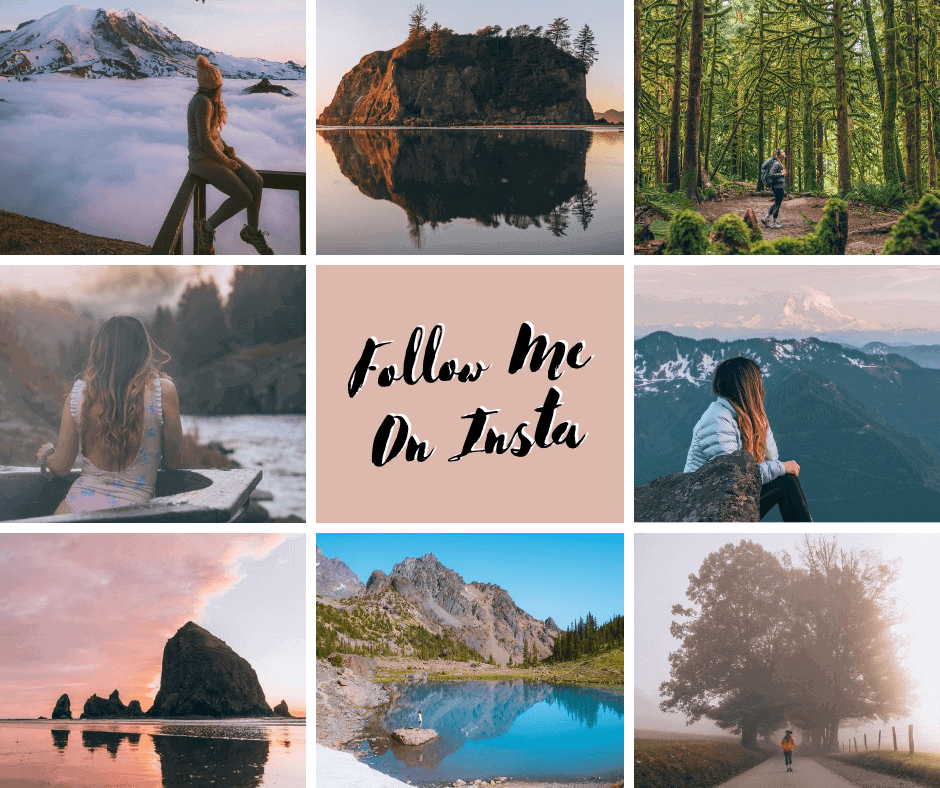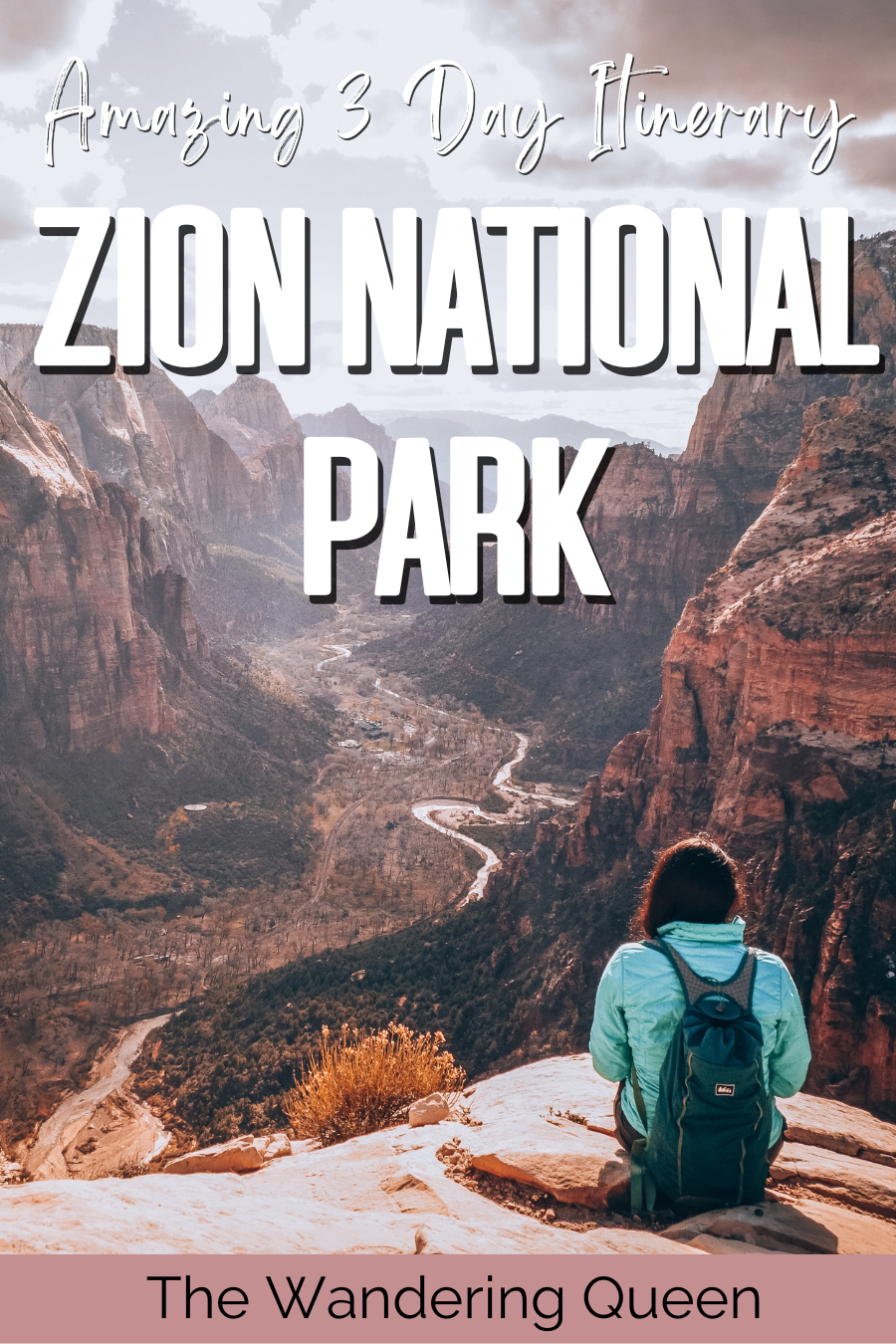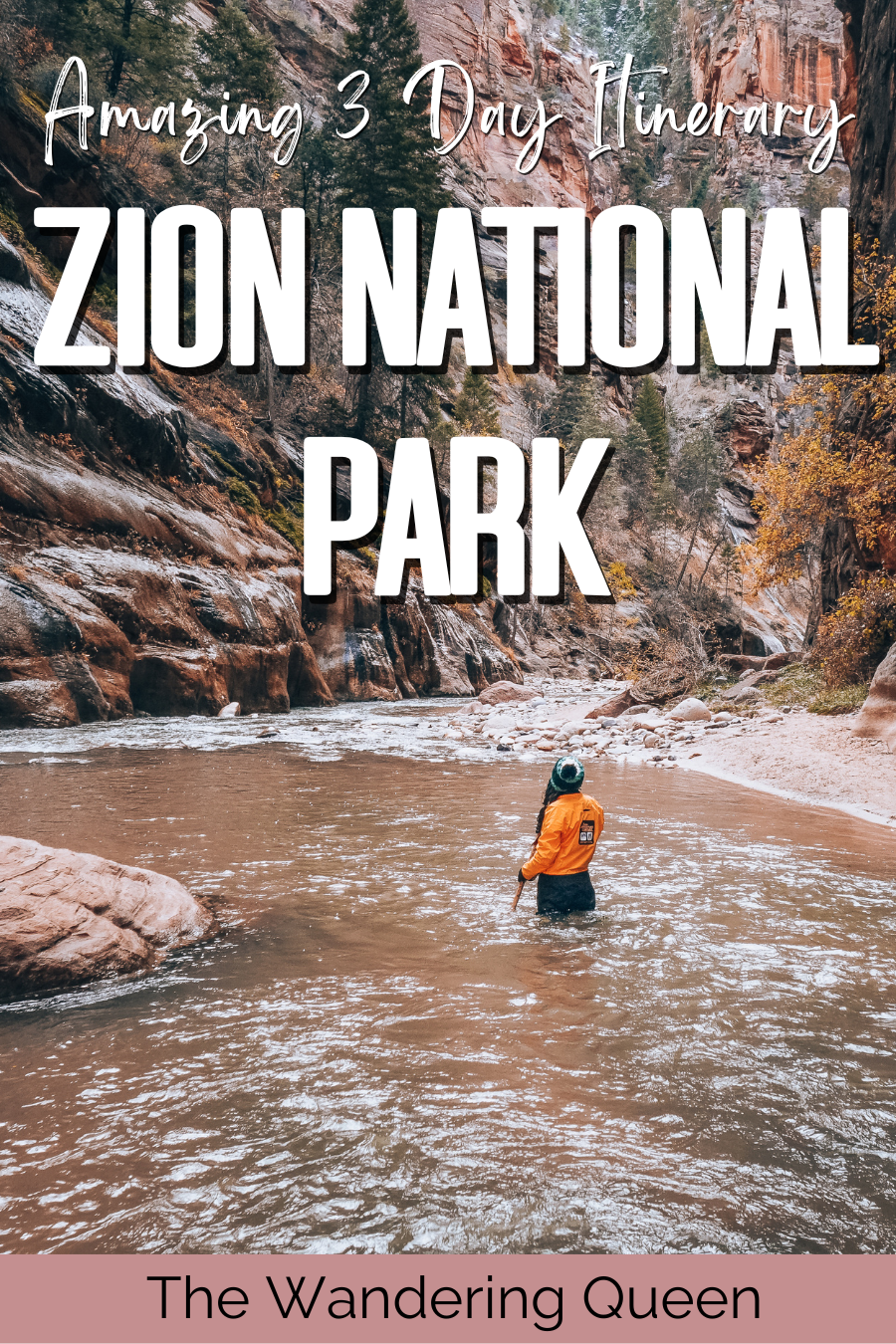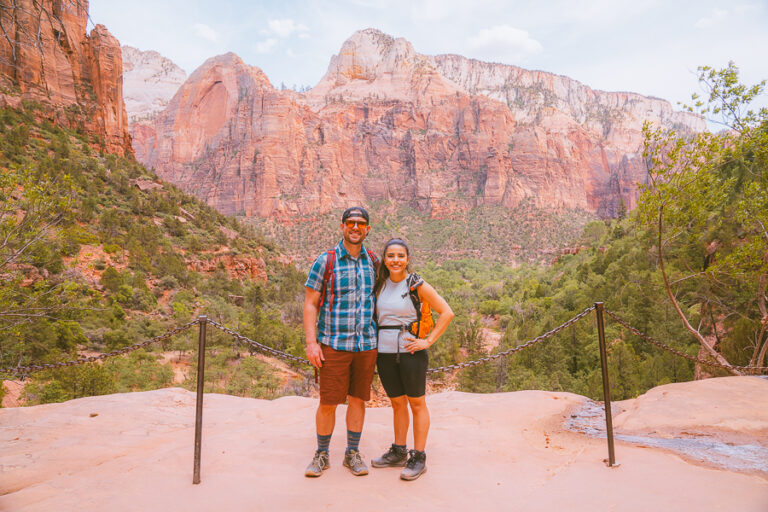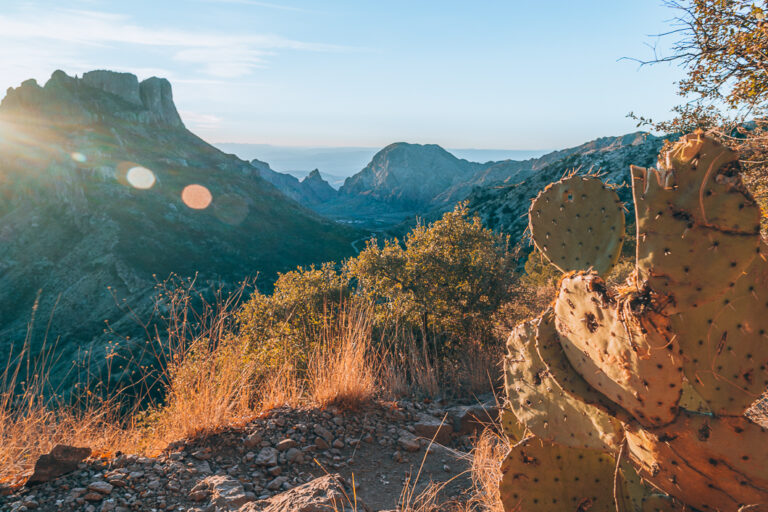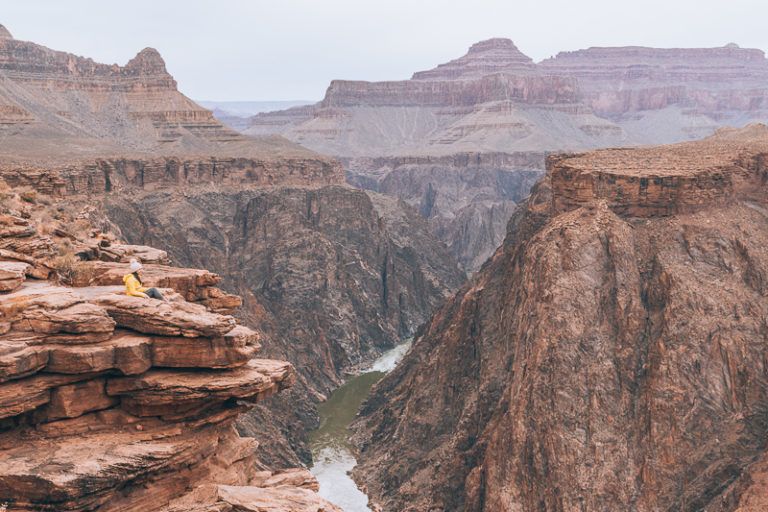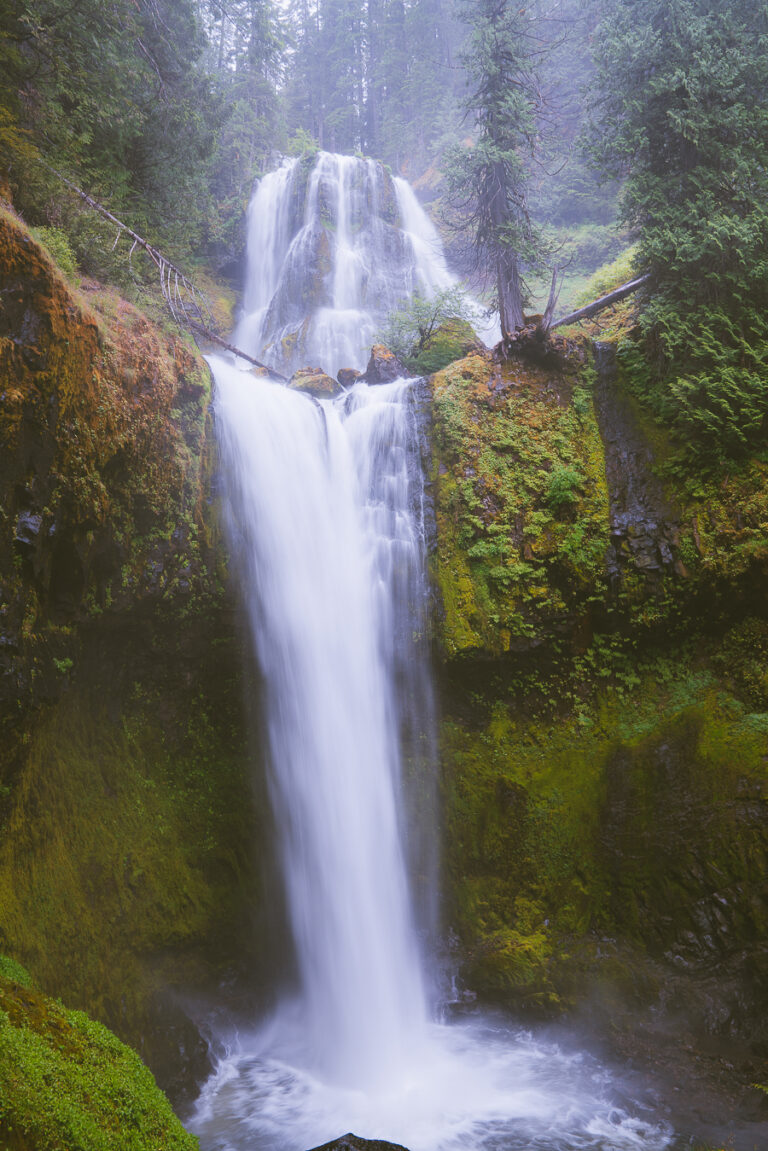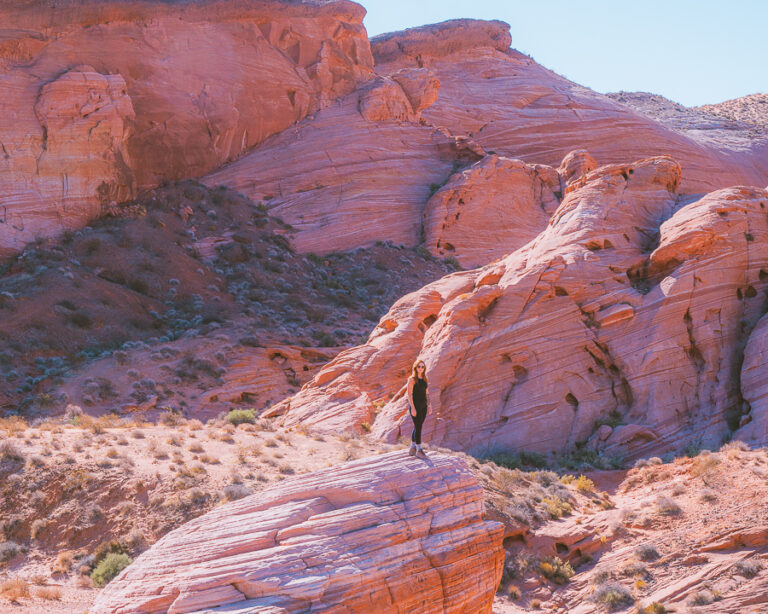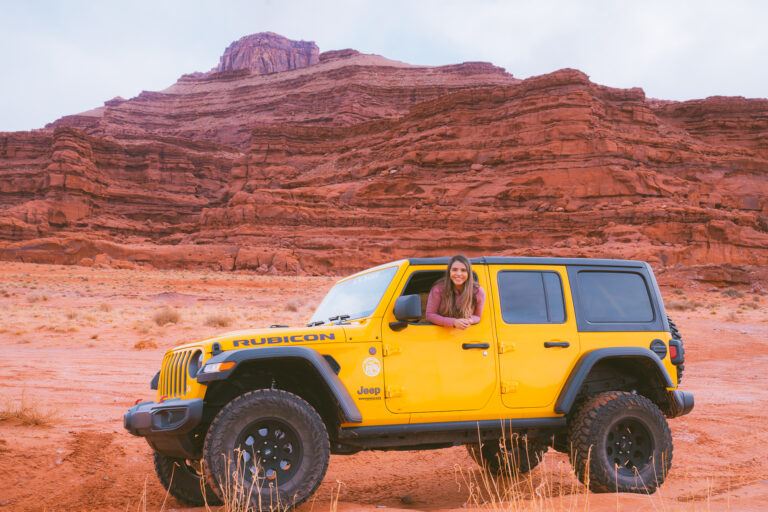3-Day Zion National Park Itinerary | Best Trip Tips & More
Zion National Park has incredible scenery that provides a backdrop for hiking, camping, river walking, swimming, and more. It has stunning red rock formations, towering sandstone cliffs, and diverse landscapes.
Visitors commonly combine a trip here with one to nearby Bryce Canyon National Park, referring to it as a Bryce and Zion getaway.
A USA National Park road trip can truly be one of the best experiences of your life, particularly if you enjoy the great outdoors. There are several fantastic parks in the US, and most will more than meet your expectations. Zion National Park in Utah is definitely one of them.
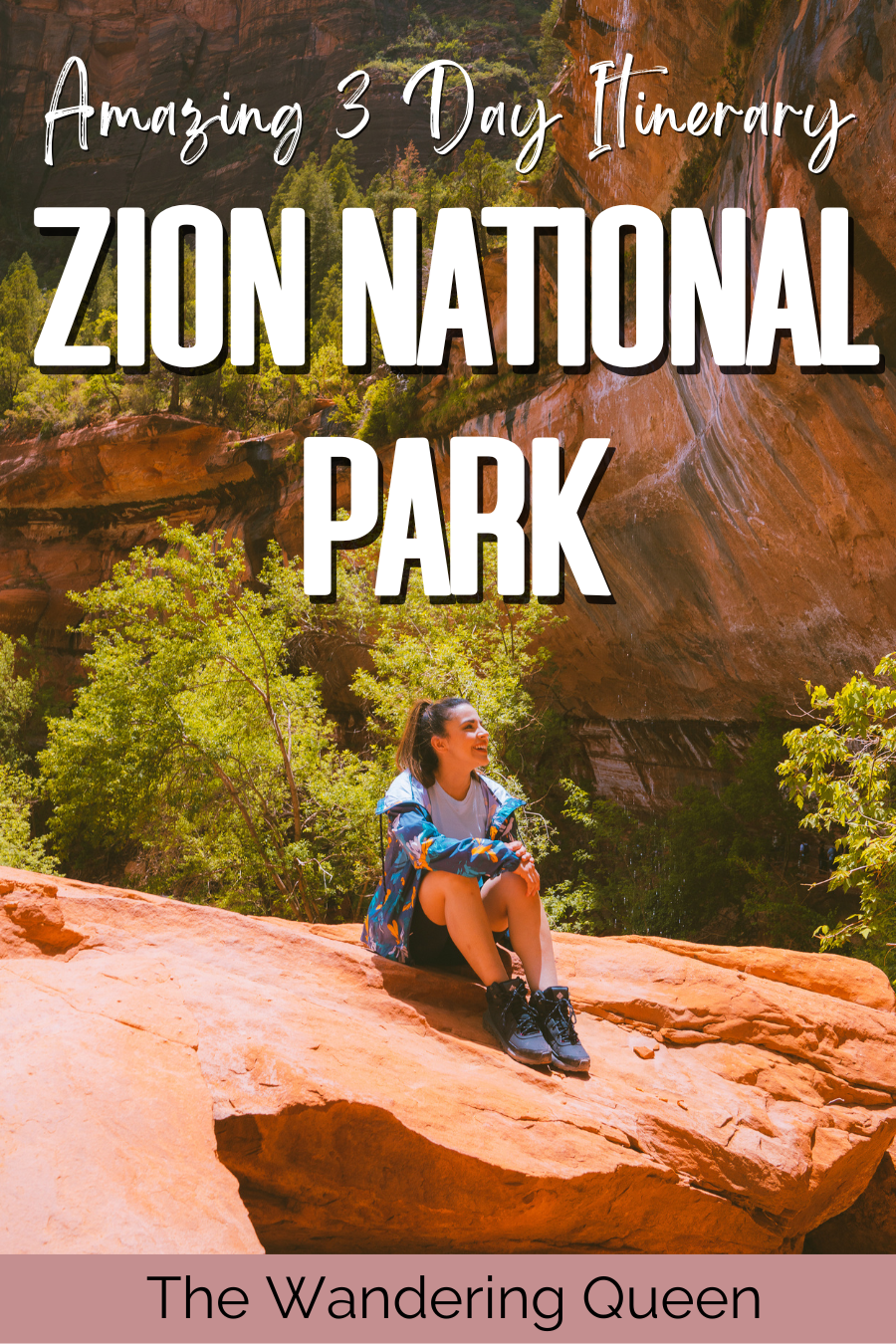

Tip: Download this national park checklist for the ultimate guide to US National Parks.
Disclosure: This post contains affiliate links. If you click one of them, I may receive a small commission (for which I am very grateful for) at no extra cost to you.
Zion National Park
Related Posts
3-Day Zion National Park Itinerary Map
You can copy and download the itinerary below, but I recommend printing it because you can’t see it if you have no service.
3-Day Zion National Park Itinerary
With all that said and understood, it’s time to plan a fantastic three-day Zion National Park itinerary for your visit.
Day One of Your Zion Itinerary
Day one of your Zion National Park itinerary starts with a bang, as you will behold two of the most iconic attractions within the park.
Emerald Pools Trail
- Distance: 2.5 miles (loop)
- Elevation Gain: 620 feet
- Difficulty: Moderate
- Trail Guide: Link
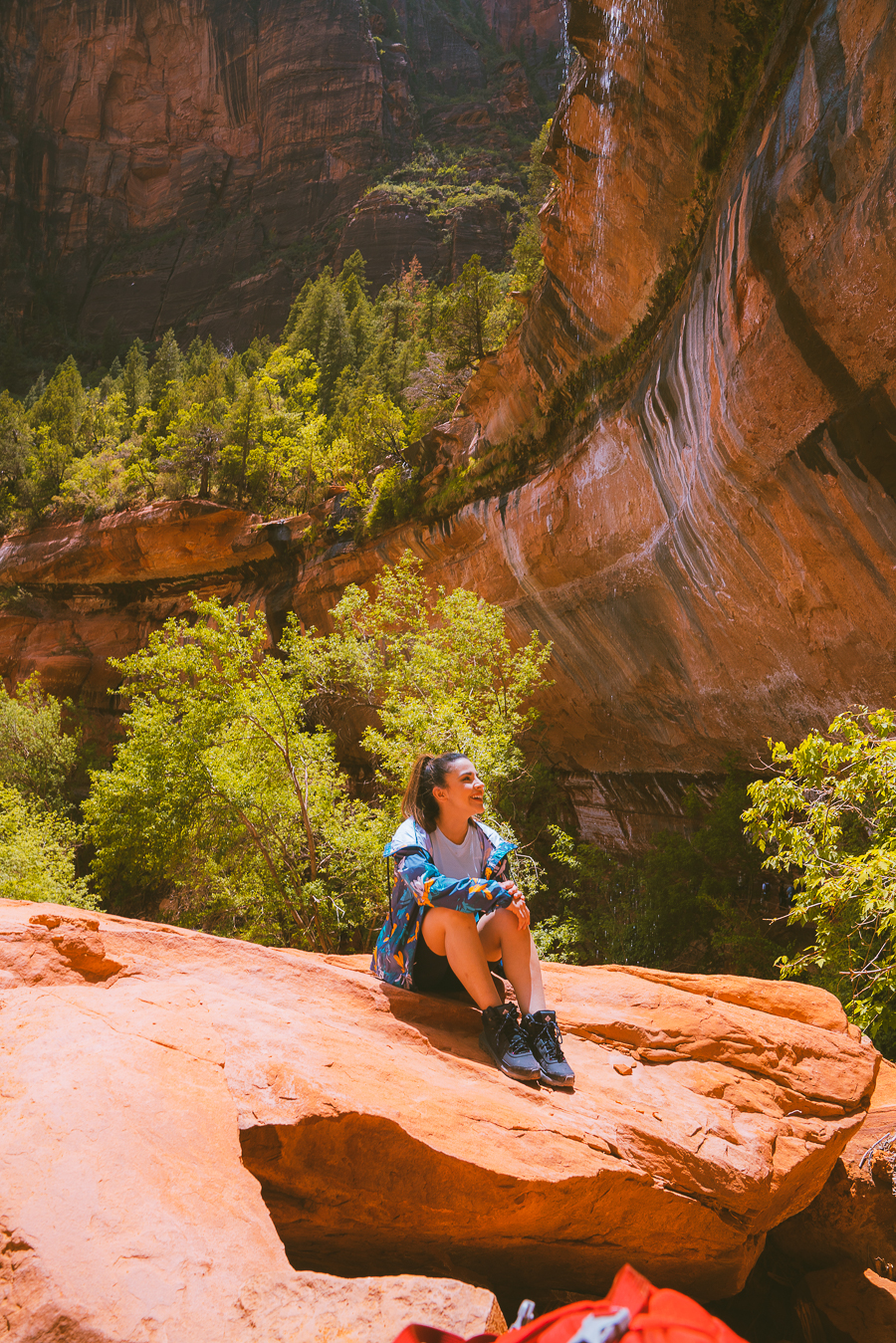
Emerald Pools in Zion National Park is an ever-popular spot for visitors. It’s essentially a desert oasis adjacent to the Historic Zion Lodge. There are three sets of pools, Upper, Middle, and Lower, and each offers visitors a choice of trails to explore. Note that swimming is not allowed in these pools.
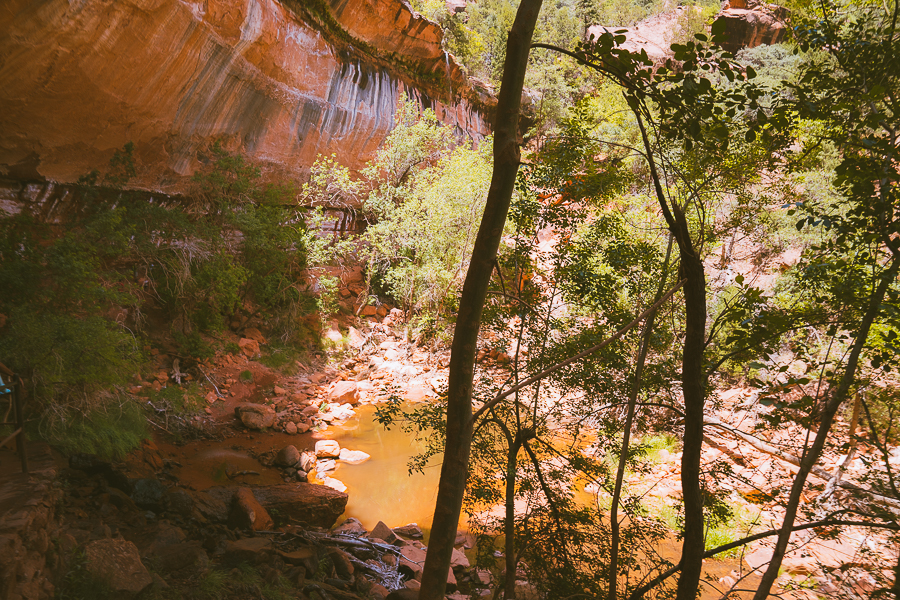
The short 1.2-mile round-trip loop from the Zion Lodge leads to the Lower Emerald Pools. If you’re up for a bit more exploration, embark on the 2-mile round-trip journey to visit the Middle and Lower Pools. For the full experience, take the 2.5-mile round-trip hike that encompasses all three pools.
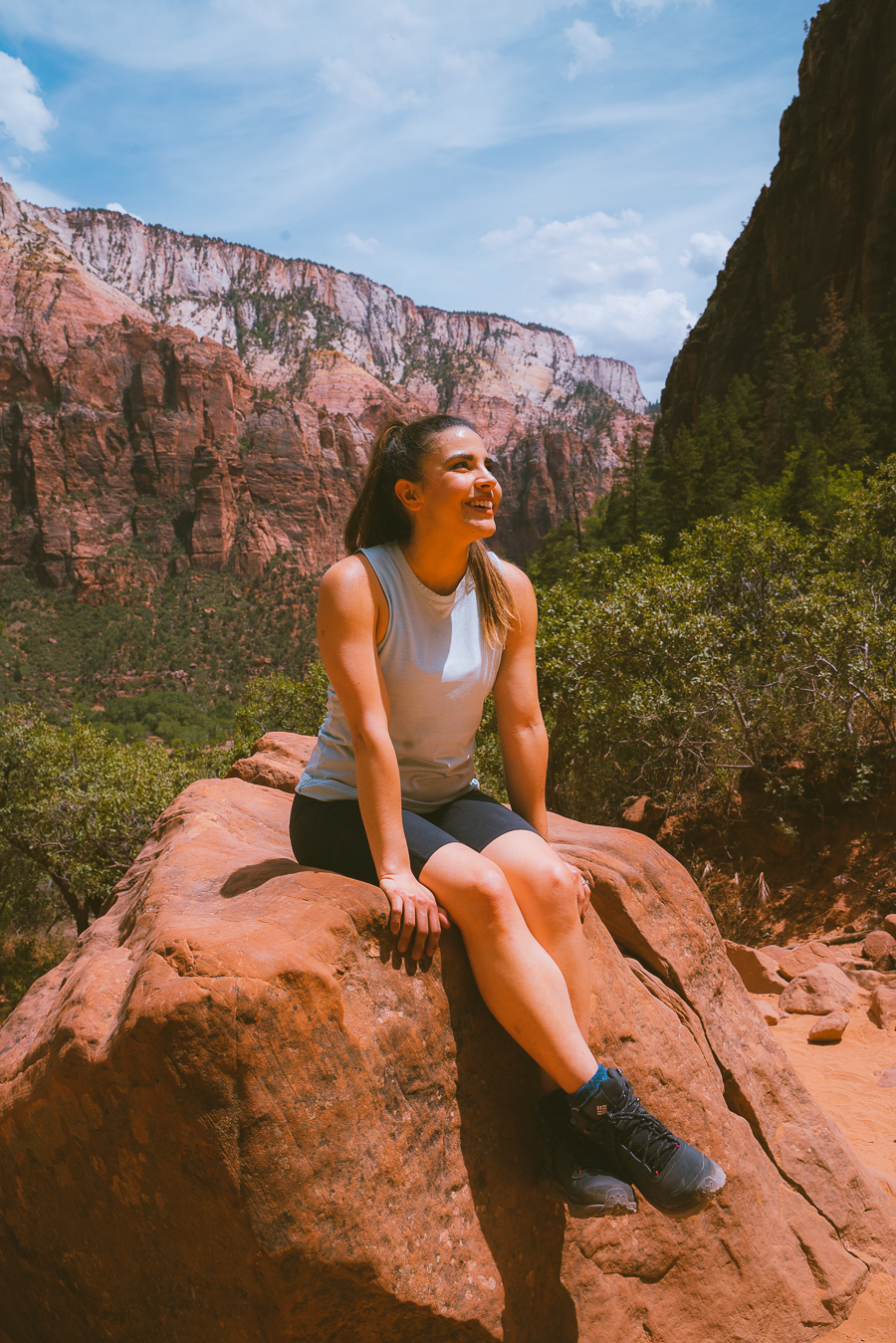
The Upper Emerald Pool is probably the most interesting. It’s positioned among sheer cliffs on three sides and a boulder foothill on the fourth, creating a natural amphitheater.
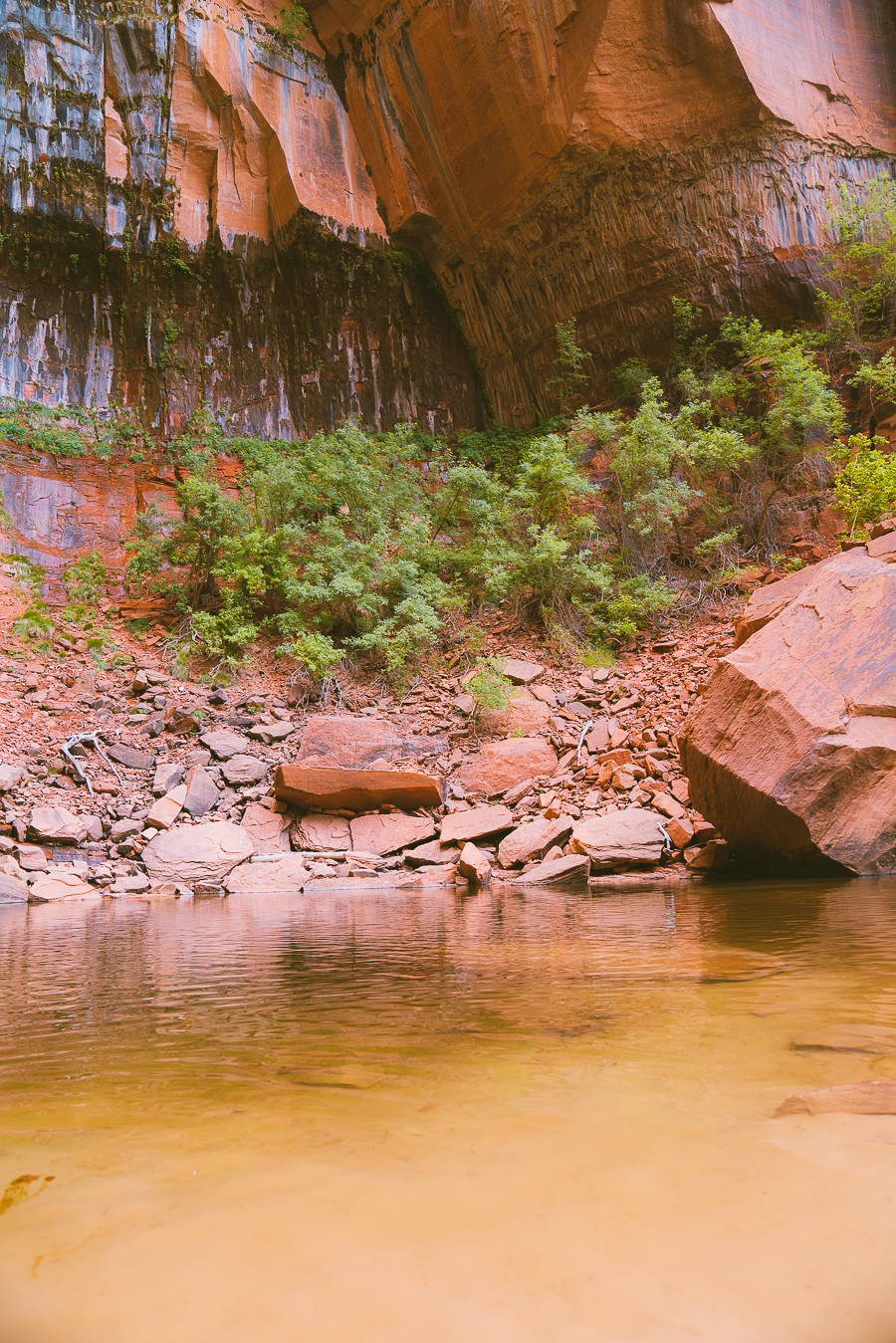
The Lower Pool is wheelchair-accessible, while the trails leading to the Middle and Lower Pools are also wheelchair-friendly. The trail from the Middle Pool to the Upper Pool has an uneven sand and rock surface and a moderate to strenuous grade that is not suitable for wheelchairs.
Lunch at Zion Canyon Brew Pub
Holiday fun means holiday food and a good lunch will be essential to enjoying the rest of your day. The Zion Canyon Brew Pub offers unique burgers, artisanal ales, and local brews.
What makes it even more exciting is that you might be lucky enough to enjoy some live music if you’re there on the weekend. All of this is set in the amazing scenery that Zion National Park offers. The pub is situated at the park’s entrance. The pub’s patio runs along the Virgin River, so this is definitely the place to take in the splendor.
Download my free Outdoor Photography Guide
Take On the Narrows or the Riverside Walk Trail
- Distance: 2.2 miles (out-and-back), but up to 10 miles if you continue along the Narrows
- Elevation Gain: 194 feet
- Difficulty: Easy to moderate
- Trail Guide: Link
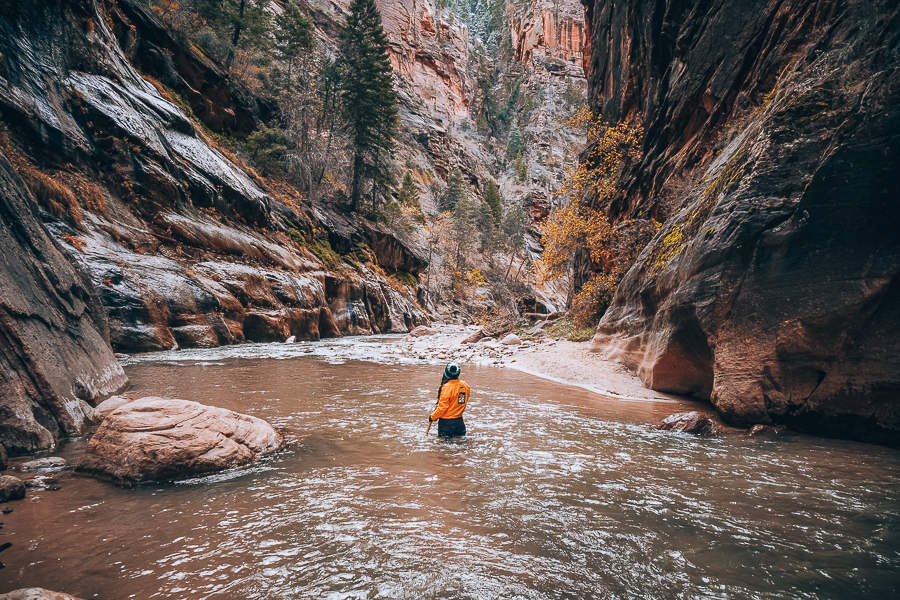
In the afternoon, take on the Narrows hike or simply do the Riverside Walk, which is essentially the first half of the Narrows experience.
Two route options are generally available: Bottom-Up and Top-Down. The Top-Down option is less appealing, partly because it requires a permit and overnight camping.
To do the normal Narrows hike adventure, catch the Zion shuttle to the Temple of Sinawava, the last park shuttle stop. The Riverside Walk starts here and has a paved path suitable for wheelchairs.
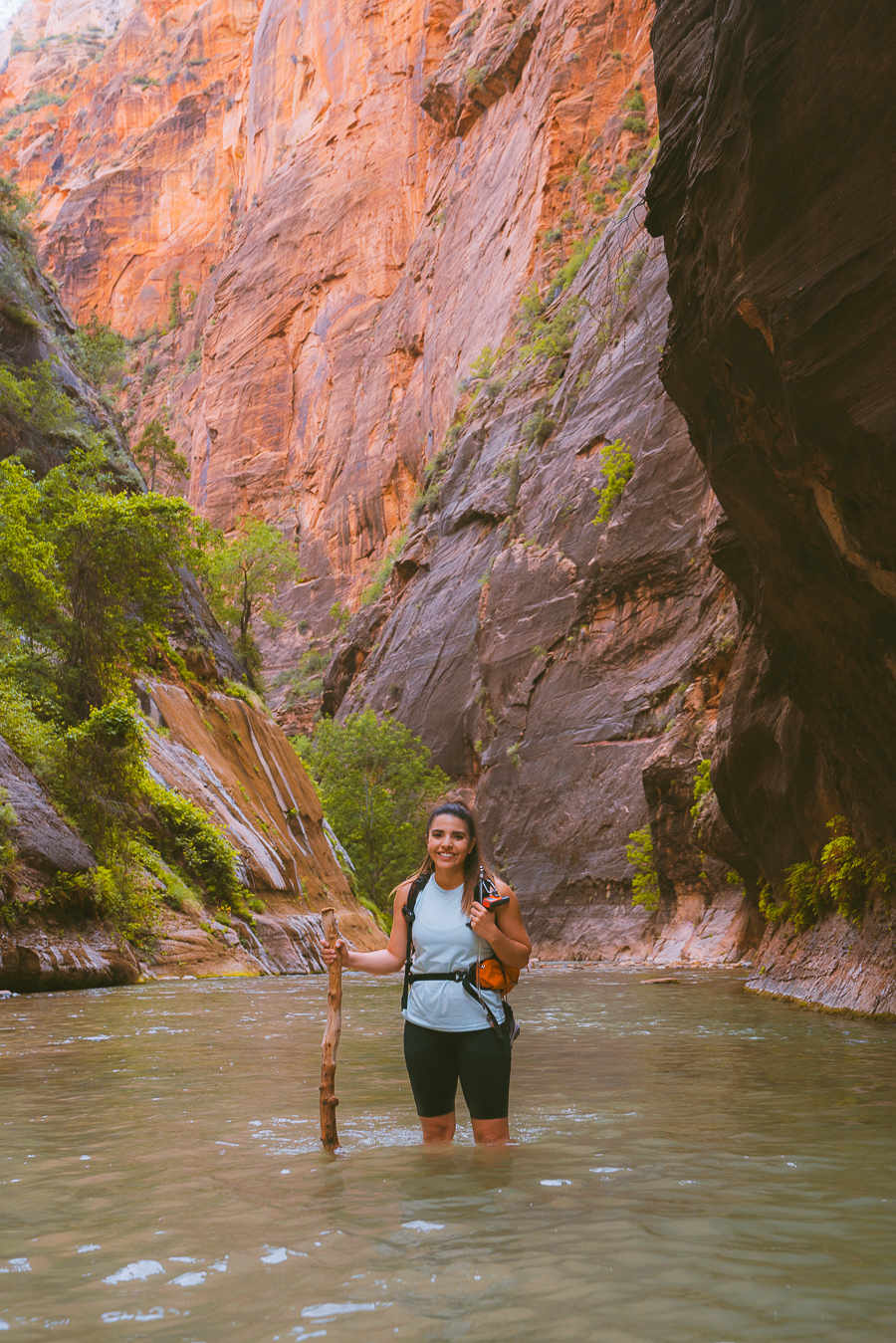
Even if you’re not tackling the Narrows, the Riverside Walk is worth exploring. When the Riverside Walk comes to an end, you can enter the Virgin River proper to continue your water-borne hike upstream into the narrow canyon.
The Riverside Walk serves as the starting point for those looking to venture into the Narrows. Simply follow the river as far as you want and turn back when you feel you’ve gone far enough. The good news is that the return walk is quicker because of the downstream flow.
Keep an eye out for the wildlife. Visitors may spot birds, squirrels, and other animals along the way.
Some hikers venture as far as Orderville Canyon, while others explore areas like Wall Street. The ultimate turnaround point is Big Springs, located five miles from the Temple of Sinawava, resulting in a 10-mile round-trip hike.

Important: Keep a sharp eye on river conditions and weather, as flash floods are known to occur in the region. Talk to the rangers at the Zion Visitors Center if you are uncertain.
Sunset at Canyon Junction Bridge
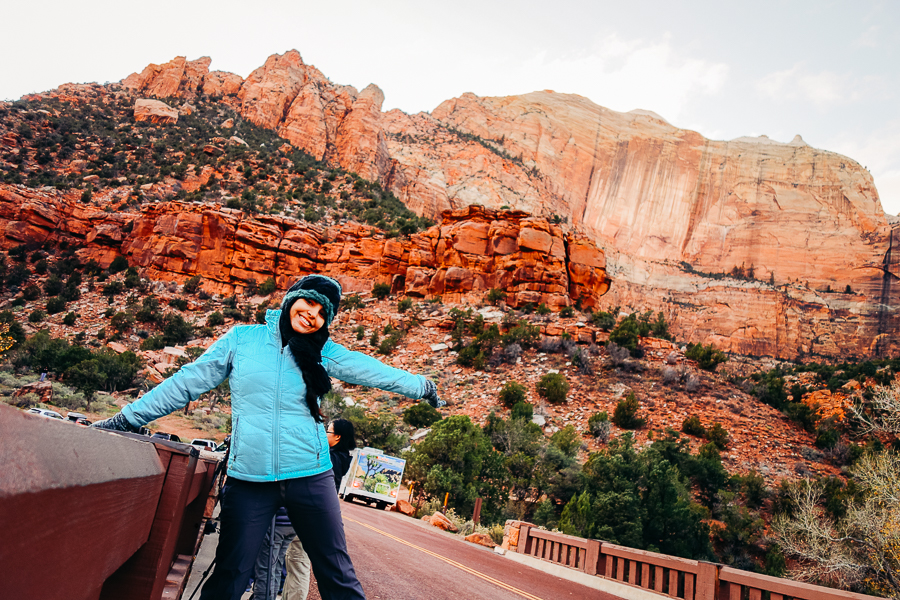
Finally, after what might be a fairly challenging day on the walks, get to a really amazing sunset point at Canyon Junction Bridge. Take the Utah SR-9 until you find a small parking area just beyond the entrance to Zion’s Visitor Center.
Canyon Junction is a notable location within Zion National Park. To reach the Canyon Junction Bridge, take the Pa’rus Trail from the visitor center. You can park either at the visitor center parking lot or the Watchman Campground and follow the signs.
At the end of that walk, you can admire the breathtaking scenery directly from the bridge.
Day Two of Your Zion Itinerary Day
Angels Landing is regarded as one of the most beautiful day hikes in the world. That’s how you will start your second day on your Zion National Park itinerary.
Hike Angels Landing
- Distance: 4.3 miles (out-and-back)
- Elevation Gain: 1,827 feet
- Difficulty: Challenging
- Trail Guide: Link
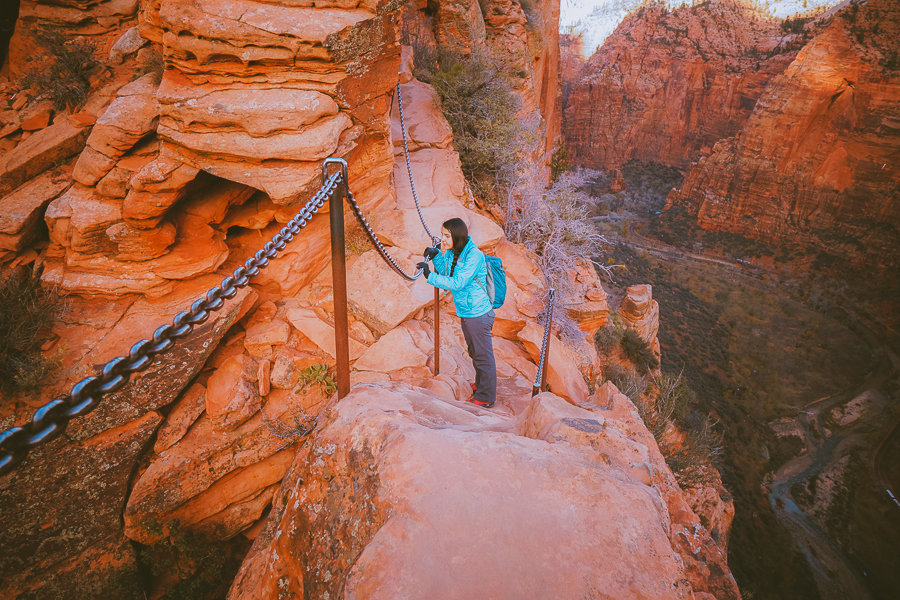
Angels Landing is a prominent rock formation and one of the most iconic landmarks in Zion National Park. The trail to the site was opened in 1926 and is a challenging hike, ascending approximately 1,500 vertical feet.
The summit itself reaches an impressive elevation of 5,790 feet. Some sections do seem precarious, but a safety chain railing accompanies most of the trail.
Note that a permit is required for the Angels Landing chain section. As it’s fairly challenging, some safety considerations are required. You can get your permit at the Recreation.gov website.
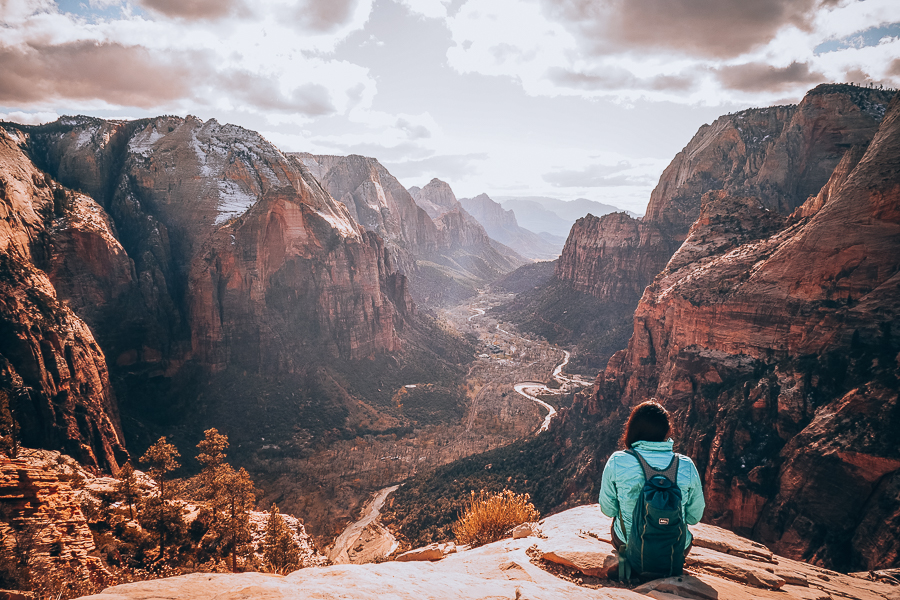
While the chain portion of the trail may cause a little nervousness for some, there’s an alternate area that offers a less daunting option. You also will not need a permit for the non-chained section. So don’t miss the opportunity to at least see why this trail comes with such a prestigious reputation.

Side fact: How Angels Landing got its name isn’t officially documented. But, it’s believed to have been named by Methodist minister Frederick Fisher in the early 1900s. The name is said to reflect the idea that only angels could land on its summit.
Lunch at Oscar’s Cafe
Head back to Springdale and indulge in something quite fun. One of the hundreds of reviews of Oscar’s Cafe claims it has “The best Turkey Burger in the world!”
The restaurant otherwise offers Tex-Mex, burgers, sandwiches, and breakfast options. It also has a surprisingly decent wine cellar, too!
Hike Canyon Overlook at Sunset
- Distance: 1 mile (out-and-back)
- Elevation Gain: 187 feet
- Difficulty: Moderately challenging
- Trail Guide: Link
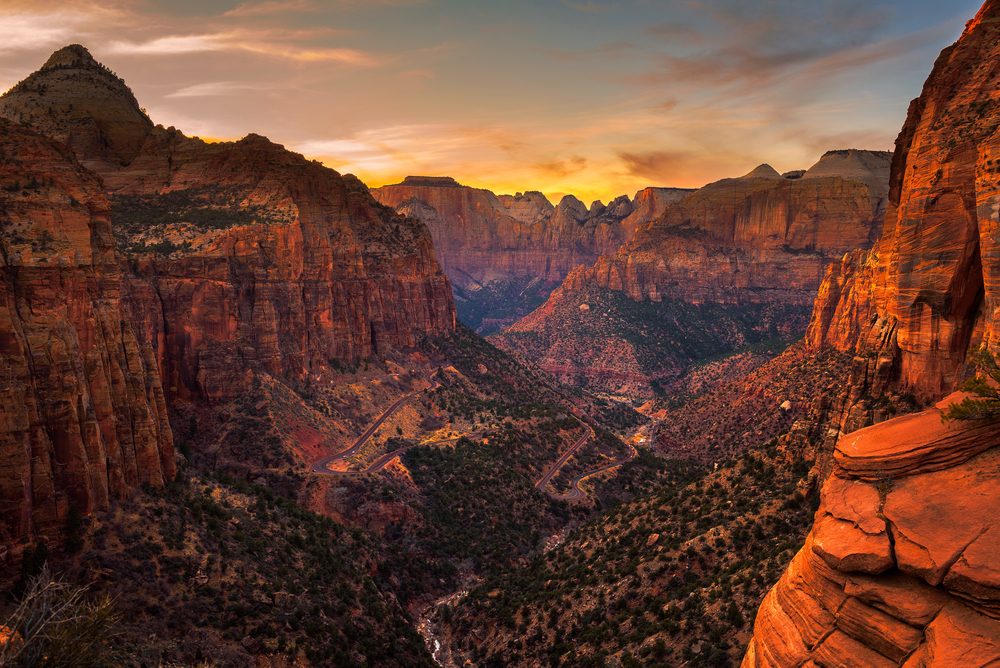
The Zion Canyon Overlook Trail is short, but it does present a truly breathtaking sunset vista. This is a trail you can take the whole family on, as it’s easy to navigate (though not wheelchair accessible).
The Canyon Overlook Trailhead is on the east side of the Zion-Mount Carmel Tunnel along the Zion Canyon Scenic Drive.
When you reach the Canyon Overlook, you get to see the vast Pine Creek Canyon. The fading sunlight hits the sandstone walls in a stunning display. Just another example of the magic present in Zion.
Day Three of Your Zion Itinerary
There’s so much to see on a Zion National Park trip that it can be daunting to fit everything into a three-day Zion National Park itinerary.
So, for your last day, you have the choice between three equally juicy hiking options. Choose between The Subway, the Watchman Spire, or the Observation Point.
Option 1: The Subway
- Distance: 7 miles (out-and-back)
- Elevation Gain: 1306 feet
- Difficulty: Very challenging
- Trail Guide: Link
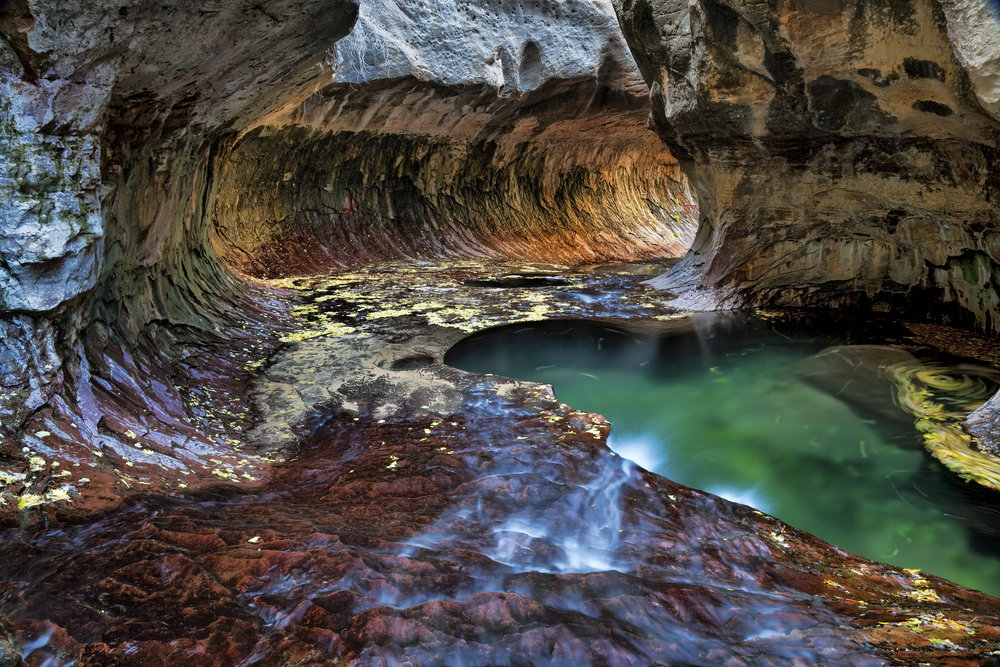
The famous Subway is a semi-technical slot canyon hike. Most adventurers prefer a top-down approach for this hidden canyon, as attempting it bottom-up is exceptionally challenging. You will need to wade, swim, scramble, and climb your way through this little adventure.
You will start at Wildcat Trailhead off Kolob Reservoir Road, approximately 15.3 miles above the town of Virgin.
The path leads down the left fork of North Creek, and the waterway serves as your route trail most of the way. This is a demanding route, and you will traverse waterfalls, navigate boulders, and scale cliff faces. It’s a good idea to pack ropes you can use to hoist and lower backpacks.
The semi-technical section of the route ends at the bottom of the Subway. As you progress through the “tunnel,” keep an eye out for the large boulder adorned with dinosaur tracks.
Keep some energy in reserve for the very end. The sign marking the trail up the ridge to the Left Fork Trailhead is the exit from the canyon. There’s one more steep climb out of the canyon at this point.
Note that the water may be very cold in some parts of the trail (depending on the time you visit), and you will need to swim in at least a few of the spots.
Option 2: Watchman Trail
- Distance: 3.1 miles (out-and-back)
- Elevation Gain: 636 feet
- Difficulty: Moderately challenging
- Trail Guide: Link
The Watchman Trail is not as well-known as some of the others on this list. It sits along the Pa’rus bike trail and is sometimes unfairly overlooked by visitors.
The Watchman offers views of Springdale and is, in fact, a perfect introduction to the wonders of the park. The trailhead is the closest one to the South Entrance of the park, so you won’t even need to take the Zion National Park shuttle to get there.
The good news for inexperienced hikers is that the trail isn’t too difficult. It does not head to the top of the spire. On the canyon overlook trail, hikers can enjoy a scenic third-of-a-mile loop trail along the Watchman bench.
Option 3: Observation Point via East Mesa Trail
- Distance: 7 miles (out-and-back)
- Elevation Gain: 702 feet
- Difficulty: Moderately challenging
- Trail Guide: Link
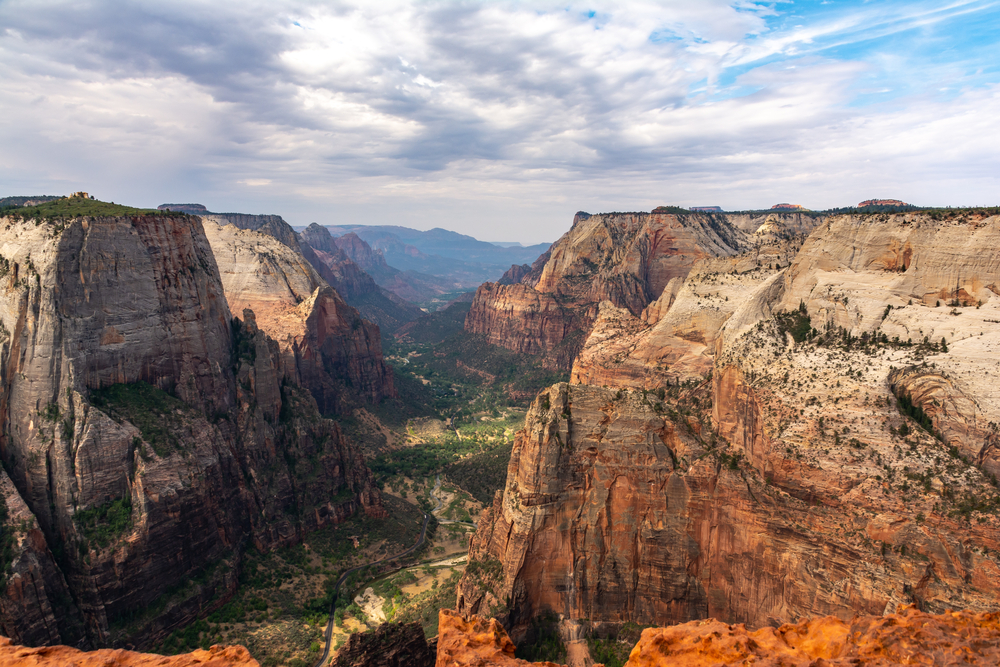
The cutely named Mount Baldy is the home of the esteemed Observation Point. The point itself provides a magnificent position overlooking one of the widest points of Zion Canyon.
Some say you can see every major point of interest from here. It makes for a breathtaking sight, and it is well worth the effort to get there on at least one of your days, if not the last.
The hike to Observation Point is challenging and achieves an elevation gain of nearly 1,000 feet. The path takes you through steep terrain, with only occasional level stretches in Echo Canyon.

Please note: The Observation Point trailhead has changed. The popular Weeping Rock Trail has not been accessible due to rockfall. You can access Observation Point via the East Mesa Trail or the longer East Rim Trail.
How to Get to Zion National Park
Zion National Park can be found near Springdale and Kanab in the southwest corner of Utah. It’s 170 miles, or a few hours’ drive, from Las Vegas, Nevada, which acts as a useful starting point for many visitors to the park.
Las Vegas airport happens to be the closest major arrival point for long-distance travelers. Most visitors who fly into the area use this airport or the Salt Lake City International Airport, although that is a lot further away at 274 miles. One advantage to flying into Salt Lake City is that smaller flights can be connected to Saint George or Cedar City.
Saint George is just 49 miles from the park, while Cedar City is 19 miles away. If you do fly, you can also easily rent a car at the airport for your Zion National Park road trip.
How to Enter Zion National Park
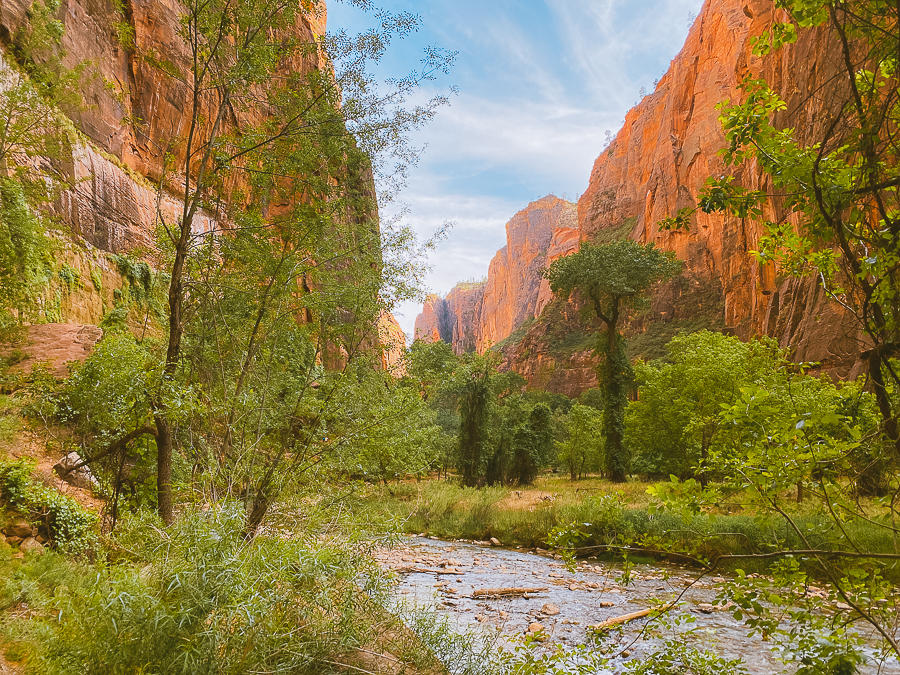
Zion National Park has three entrances to choose from. While you do not need permits to visit the park, you will need to pay an individual park fee of $35, which gives you park entrance for a week. Here’s a quick note on each.

Side note: The America the Beautiful Pass is the ultimate money-saver. This pass offers you unlimited entry to all US National Parks for an entire year and only costs $80. >>>Purchase your pass here
The South Entrance
This is considered the main entrance and is the most popular option. It’s near the town of Springdale, which offers several hotels and restaurants for visitors. Shuttles leave from Springdale to the park’s visitor center.
You will need to use shuttles to get into the park for much of the year (especially spring, summer, and fall), as private vehicles aren’t allowed into the park. The Zion Canyon Scenic Drive is located within Zion National Park and starts from this entrance.
Whether you take the Zion Canyon Shuttle or go by private vehicle when allowed, you’ll be awed by the views of the amazing landscape. The Zion Canyon Scenic Drive is the primary route through the main canyon of the park, providing access to many of the park’s iconic features and trailheads.

Side note: There is another interesting attraction you may consider if you are near the South Entrance: The Zion Human History Museum. The museum is dedicated to showcasing the human history of Zion National Park and the surrounding region.
Tunnel or East Entrance
Also known as the tunnel entrance, the east entrance is near the towns of Mt Carmel and Kanab. Constructed in the 1920s, this somewhat fascinating engineering marvel was actually intended to facilitate access to the eastern section of the park and create an additional scenic route for visitors.

PS: The distance from Zion to Bryce Canyon is a mere 83 miles and takes less than two hours.
Kolob Canyons Entrance
If you’re keen on a lesser-seen part of the park, try the “highway entrance” off the I-15, known as Kolob Canyons, situated in the northwestern part of the park. The trails and drives accessed from this entrance are far less crowded. One of the many highlights is the five-mile Timber Creek Overlook drive.
Some notable features in the Kolob Canyon area include the Kolob Arch, one of the world’s largest freestanding arches, and the Timber Creek Overlook. The panoramic views of the canyons and surrounding landscapes from this point are spectacular.
Best Time to Visit Zion National Park
Usually, the best time to visit a holiday destination is quite a subjective choice. In the case of Zion National Park, though, March to April and then October to November come highly recommended. Most things are open, and there are slightly fewer crowds to navigate.
Still, it’s best to get into the park early, preferably before 9 am. In the summer and surrounding months, you’ll need to consider that only park shuttle options are allowed from the visitor center. If you want to avoid competing for space there, it’s best to get in early as well.
Zion National Park in Summer
June – August
Summer is the peak season and hottest time of the year in Zion National Park. It can reach 100 °F (38°C) on some days. Yet, if one were being honest, it’s not necessarily one of the best national parks to visit in summer.
There are regular thunderstorms in the region, and high rainfall in the mountains increases the risk of flash flooding in the canyon. The river waters have also recorded high levels of toxic cyanobacteria in the Virgin River and surrounding streams during the warmer months.
There are few shaded areas on the hikes, so the best advice is to do them early and bring plenty of hydration.
A Note on Thunderstorms
Thunderstorms are most common in Utah during the summer months, from late spring to early fall. They can be intense and dramatic, particularly during the warmer months. The state’s diverse geography, which includes mountains, plateaus, and deserts, contributes to the formation of thunderstorms.
They often feature lightning, strong winds, and heavy precipitation. Flash floods are a significant concern, especially in slot canyons and areas with steep terrain, just like in Zion National Park.
Zion National Park in the Fall
September – November
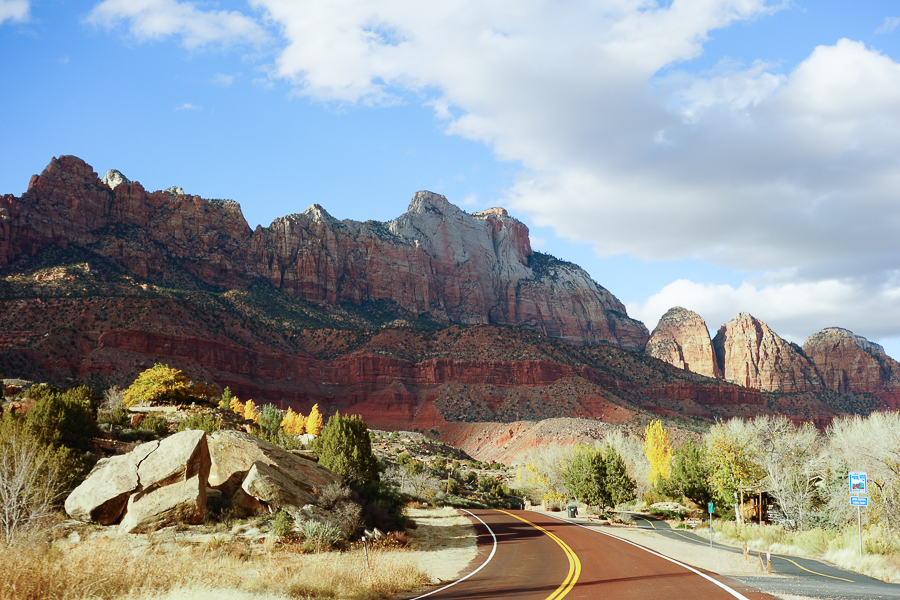
Fall is considered a much better option to explore Zion National Park. For one thing, you will not have to deal with the summer crowds of peak season. The weather is more comfortable and mild, too, ranging between the 60s and 70s °F (15-25 °C).
November is your best bet to take advantage before the snow arrives. Note that there may still be a thunderstorm or two during this time. Nights will get cold, so bring appropriate layers to protect yourself after warmish days. The water in the river is also cold, so if you do plan to swim or wade, a wetsuit or drysuit may be a good choice.
Zion National Park in Winter
December – February
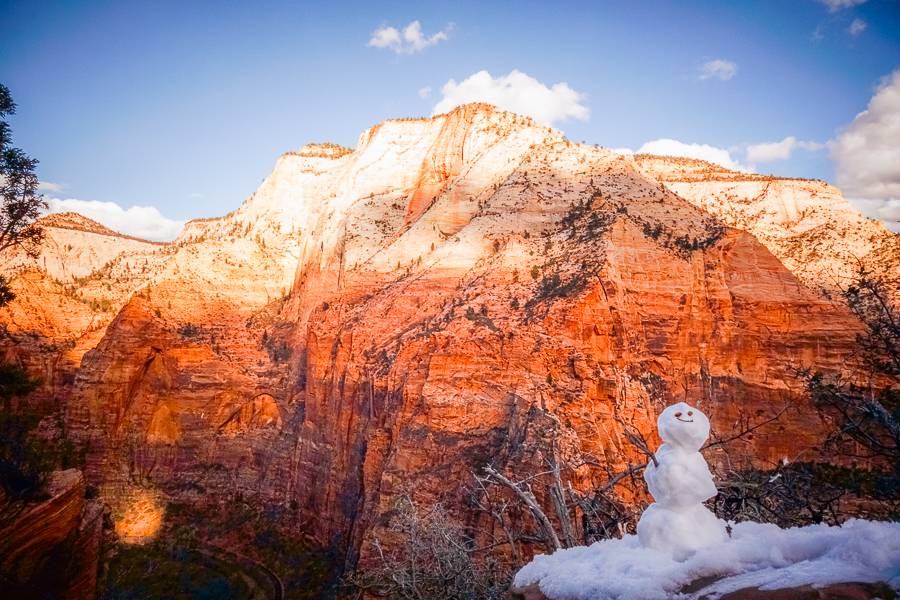
Zion National Park should be added to the list of the best national parks to visit in winter. There are far fewer people hustling through the park, which makes for a much more peaceful and serene experience.
The downside is that the park is wet and cold during winter. It often drops below freezing at night. That said, for those who love the wintertime with a hint of snow, it could be the perfect nature getaway.
Roads and trails are icy and a bit more treacherous, and some roads are indeed closed for safety reasons. A few hiking trails may even require special equipment like microspikes. It’s a good idea to check in with the visitor center and park rangers before settling on any specific plan.
Zion National Park in Spring
March – May
Next to fall, spring is probably another one of the best times to visit Zion National Park.
The weather maintains a pleasant medium in the 60s and 70s °F (15-25 °C) during the day, and there are far fewer thunderstorms on average. The blossoming flowers and the trees coming to life offer an enchanting and exciting visual experience.
The Virgin River tends to swell in the spring due to snowmelt, so there are high water levels that can result in the closure of the Narrows hike. If experiencing the Narrows is a top priority, it might be wise to plan your visit for a different time of the year.
Spring break means there are more crowds, though. This happens in much of the country in March most years, with April being Utah’s kick-starter month. So expect some swell in visitor numbers at this time.
Extending Your Trip to a Bryce Canyon/Zion National Park Itinerary
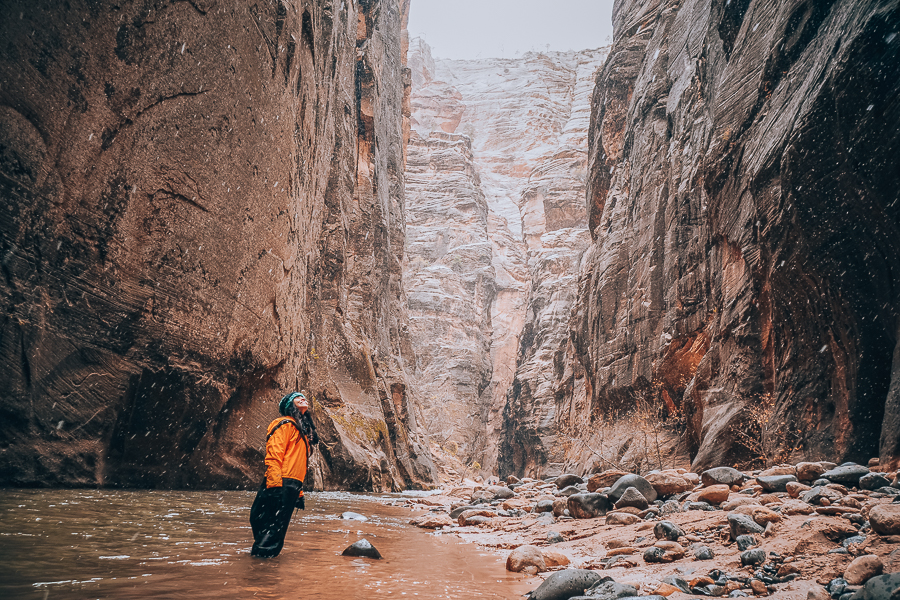
If you would like to extend your trip, you can add a visit to Bryce Canyon National Park. As the parks are just an hour away from one another, seeing both of these exceptional parks is a great idea.
It would be ideal to extend your Zion and Bryce Canyon itinerary by around an extra two days if possible.

Top Tip: On the other hand, you don’t have three days, try this handy itinerary for one day in Zion National Park.
Grab Your Free Car Camping Checklist! 🚗🌲
Ready to elevate your car camping game? Snag our essential checklist to ensure you’ve got everything you need for a stress-free, fun-filled adventure! Perfect for beginners and seasoned campers alike. Download now and hit the road prepared! 🌟🎒
Zion National Park Itinerary: Frequently Asked Questions
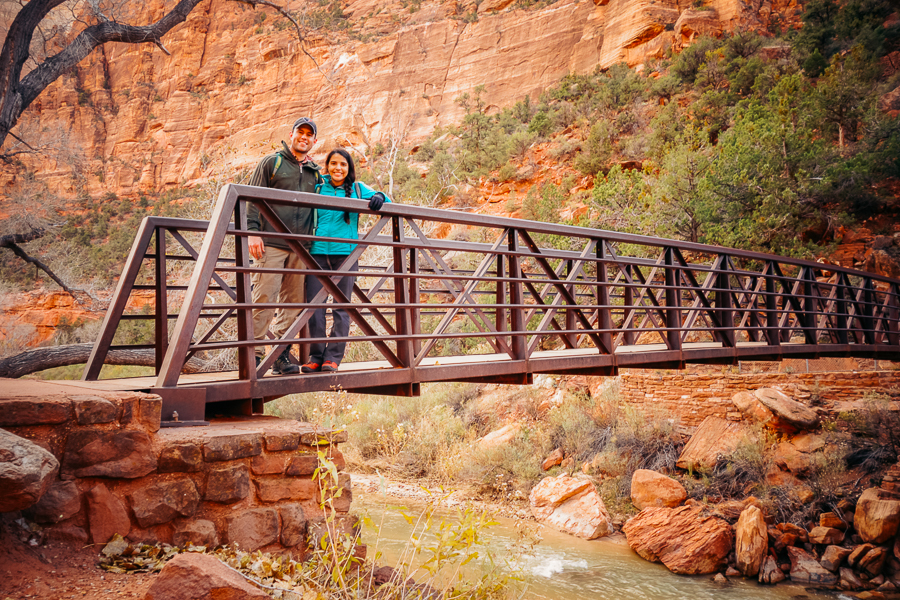
Here are some frequently asked questions about the Zion National Park.
Why Is Zion National Park So Famous?
Zion National Park is primarily known for its landscape, in particular its sandstone cliffs and deep canyons. The sandstone landscape also shows off interesting, streaking red colors, especially at sunrise and sunset.
One of the key attractions is the Zion Canyon, a deep and narrow gorge carved by the Virgin River over millions of years. The towering sandstone walls of the canyon, reaching up to 2,000 feet in height, provide a dramatic backdrop for awesome pictures.
The park also features iconic landmarks like Angels Landing and the Narrows, offering ambitious hikes and opportunities for breathtaking views.
Is Zion National Park Expensive?
In Zion, the fee for a private vehicle with a seven-day pass is around $35. Individual entry fees for pedestrians or cyclists are lower. There’s a decent range of accommodations available close by, so visiting the park should fall within most budget ranges.
Is Zion Park Part of the Grand Canyon?
Zion National Park is not part of the Grand Canyon. It’s situated in southwestern Utah. The Grand Canyon, on the other hand, is located in northern Arizona. The Grand Canyon is significantly larger and older than Zion Canyon.
Can You Swim in Zion National Park?
Swimming is allowed in most sections of the river, but tubing is prohibited. You may not swim in the Emerald Pools attraction at all.

Tip: The Pine Creek Waterfall swimming hole in Zion National Park is a hidden gem worth discovering.
Tours Of Zion National Park
What To Pack For The Best Hikes At Zion
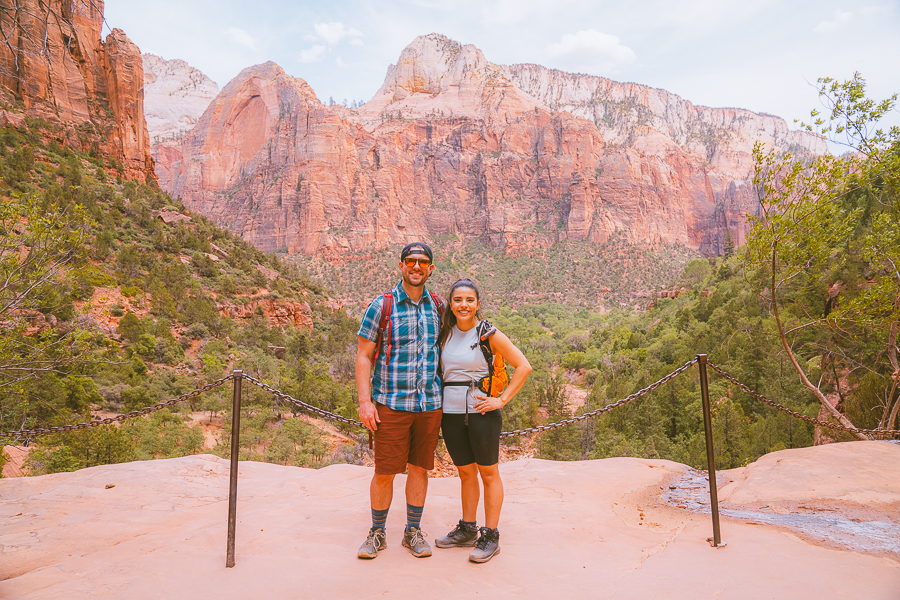
- Sunscreen: Utah gets HOT! Even in the winter, we were hiking in bright sunny weather at times. >Buy Sunscreen
- Hiking Boots/Shoes: If you use tennis shoes, you can easily hurt your toes by hitting a rock by accident (Trust me, I have done it so many times before). >Check Out My Hiking Shoes
- Hiking socks: Having the correct socks helps you prevent getting blisters. Smart Wool is probably my favorite brand out there. >Buy Hiking Socks
- Water Reservoir: Water reservoirs help prevent me from getting dehydrated while hiking. The great thing about this reservoir is that it doesn’t have a plastic taste. >Here Is My Water Reservoir
- Water: Stay nice and hydrated.
- Sunglasses: It can get sunny, so make sure to pack some sunglasses. >Check Out These Sunglasses
- Snacks: The best snacks are jerky, nuts, and energy bars. Clif Bars are great for hiking.
- Camera: The Sony A6000 was one of the first cameras I started traveling with. The Sony A6000 is an excellent camera for people that want to start improving at travel photography. >Buy Sony Camera Here
- First Aid Kit: This is one of the first things I bought when I first started going on adventures. It is super portable. >Buy This Awesome First Aid Kit Here
- Day Pack to carry all your things: The REI bag I have linked, we have had for seven years now, and it is still going strong! >Buy This Great Quality Backpack
- Headlamp: A headlamp is an absolute must in case you get stranded in the dark! It is a lot more portable and easier to use than a flashlight. >Buy A Headlamp Now
- Leggings or shorts: Shorts are good for hot days and if you are hiking the narrows! >Click For These Cute Shorts
- Breathable sweat-wicking shirts: Cotton shirts soak up your sweat when hiking, so make sure to wear something breathable. >Check out this awesome breathable shirt here.
- Sports Bra: For women. >Buy One Here
- Jacket: In case you go during the winter months. >Buy My Favorite Jacket
- Tripod: This is an optional item, but it is excellent for getting the ideal sunset pictures. >Check out this tripod
- Knife: I always carry a knife in my backpack just in case. >Check Out My Knife Here
- National Park Pass: I highly recommend getting a year-long America The Beautiful Pass. >Get It Here
- Sandals: If you are hiking the Narrows then I suggest good sandals. >Click Here For These
- Trekking Poles: I highly recommend this if you are hiking the narrows. It really helps with balance. >Buy Some Here
- Map For Zion: A map is essential so you don’t get lost. I love National Geographic’s maps. They are good quality >Buy One Here
Claim your FREE Hiking Checklist
Ready to start hiking? Grab my free hiking checklist and never forget anything at home!
How Many Days to Spend in Zion National Park
Three days may be the perfect amount of time to spend exploring this divine wilderness. Of course, more is always better. Take a look at a great way to split a three-day Zion National Park Itinerary.
However, if you want to see Zion and Bryce Canyon National Parks all in one go, extending your stay to five days is ideal.
Where to Stay in Zion National Park
Looking for a place to stay while visiting this beautiful park? Here are a few suggestions to consider.
Luxury | Brian Head Lodge
This beautiful luxury Zion Lodge is situated in the scenic location of Brian Head and conveniently located within seven miles of Cedar Breaks National Monument. It is about 50 miles from Zion National Park.
The area surrounding the hotel is popular for hiking and skiing. The Zion Lodge even offers bike rentals for those looking to explore the surroundings. >>>Check Availability
Mid-Range | Holiday Inn Express Springdale
Situated just 1.6 miles from the stunning Zion National Park amidst the captivating red rock cliffs, the Holiday Inn Express in Springdale is a superb middle-budget option.
The hotel makes for a good base if you are also planning to visit Bryce Canyon, which is just 85 miles away. It’s also just yards away from the above-mentioned Oscar’s Cafe. >>>Check Availability
Budget | Super 8 by Wyndham
The Super 8 is in downtown Hurricane, Utah, about 2.5 miles from the useful but small Hurricane Airport. If you’re a golf player, you may want to take advantage of this hotel’s location.
Coral Canyon Golf Course is just a 12-minute drive away, while the stunning Zion National Park is located 17 miles from the hotel. >>>Check Availability
Camping | Zion View Camping
Zion View Camping in Hildale offers accommodations, free bikes for use by visitors, and barbecue facilities at an outdoor fireplace.
At the campground, every unit includes outdoor furniture for your convenience. There’s a seating and a dining area in all units as well. For guests with children, the campground conveniently provides outdoor play equipment to keep them busy during your downtime. >>>Check Availability
Camping in Zion National Park
If you’re hoping to camp in Zion itself, you’re not short of options. You can take your pick from three stunning options: the South Campground, the Watchman Campground, or the Lava Point Campground.
Being some of the only accommodations within the park itself, these campsites book up quickly. So, if you want to enjoy a truly rustic outing in the natural expanse that is Zion National Park, book one of these campsites at least six months in advance. >>>Check Availability
Final Thoughts on Planning a Zion National Park Itinerary
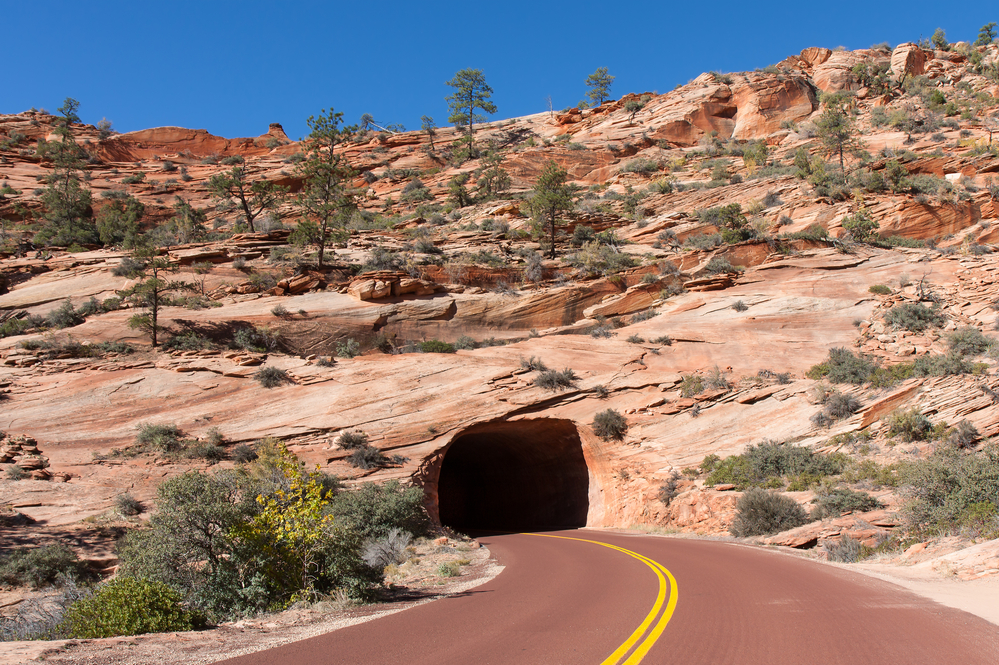
Zion National Park stands as a monument to the astonishing beauty of nature. The towering red cliffs stand in majestic support of the serene flow of the Virgin River. Visiting Zion National Park should be on any keen hiker’s bucket list.
This is a great place to navigate the awe-inspiring canyons or discover hidden gems like the Pine Creek Waterfall swimming hole. There are plenty of places to stay in or around the park. The local eateries and restaurants offer surprisingly good food and a cheery atmosphere. Have a good Zion trip!

PS: If you’re unfamiliar with hiking, check out these guides on wildlife safety tips and some Leave No Trace principles for US and Utah national parks.

